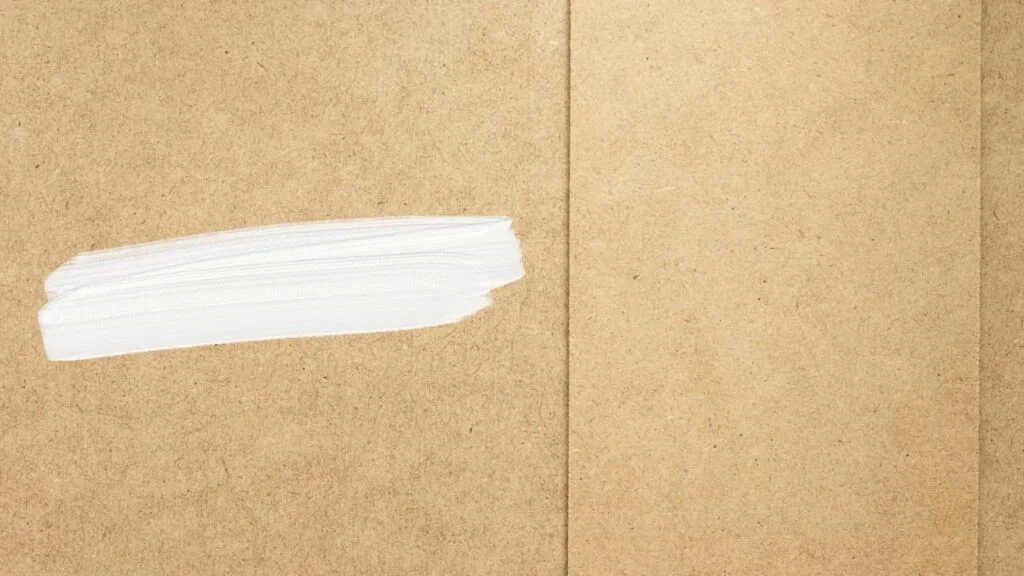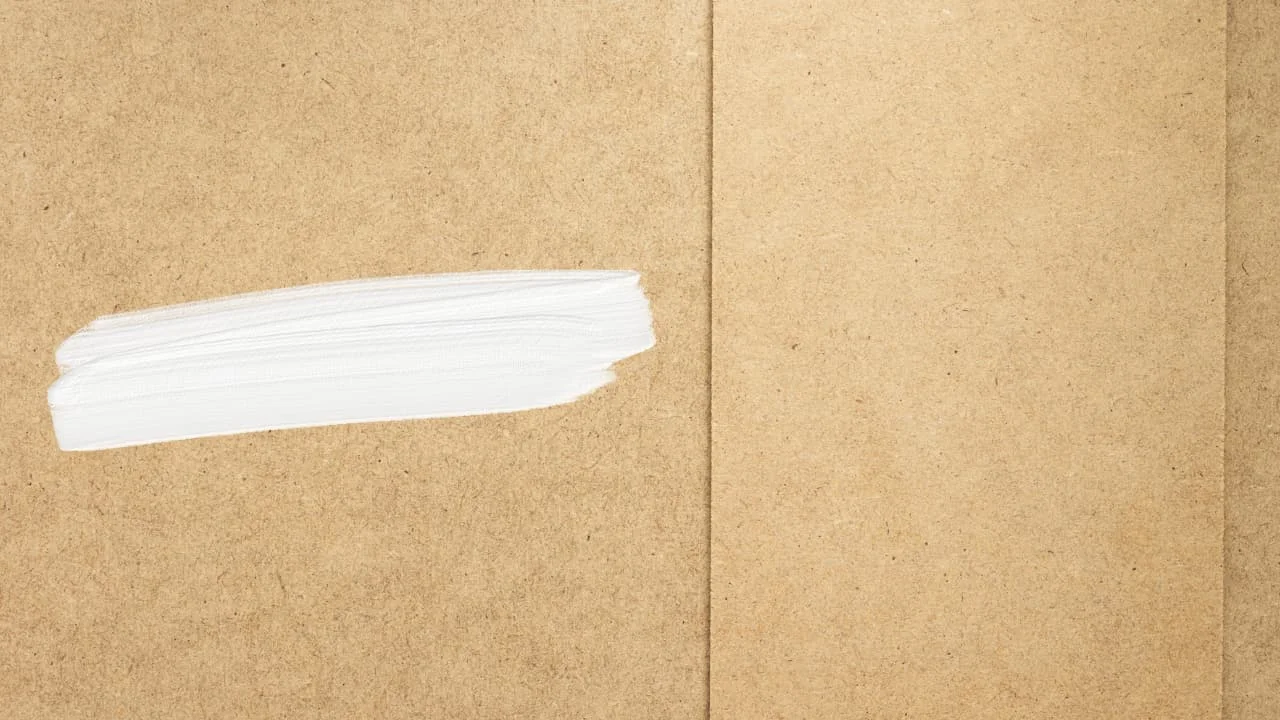Are you looking to spruce up your hardboard surfaces but unsure if painting is an option? Good news – it absolutely is! Hardboard, a versatile and durable wood-based material, can be easily transformed with the right paint and techniques.
In this blog post, we will explore the properties of hardboard, discuss the benefits and challenges of painting on this substrate, and share simple tips and tricks to achieve a professional finish.
Key Takeaways – Can You Paint Hardboard?
- Hardboard is a versatile and affordable wood-based material that can be painted with both acrylics and oils, making it an excellent choice for artists seeking a durable canvas alternative.
- The surface of the hardboard tends to absorb paint quickly, but careful preparation with sanding and primer or gesso layers can provide a porous and even base for painting on.
- Choosing the right paint type, experimenting with techniques such as layering or glazing, and finishing with varnish or sealant are essential steps to achieving professional-looking results when painting on hardboard.
Table of Contents
Understanding Hardboard

Hardboard is a type of engineered wood that is made from compressed fibers, and it has a smooth surface on one side and a rough surface on the other.
Definition And Properties
Hardboard, commonly known as high-density fiberboard (HDF), is a versatile engineered wood product made from compressed residual wood fibers. Its unique manufacturing process yields an exceptionally dense and strong material with uniform consistency.
One of the most appealing aspects of hardboard is its adaptability to different types of finishes, including paint. The material’s inherent properties allow for excellent adherence between the paint and the surface, ensuring long-lasting results when properly executed.
Types Of Hardboard
Hardboard is a hardwood versatile type of engineered wood made from compressed fibers. There are several types of hardboard, including standard, tempered, perforated, and oil-tempered.
Standard hardboard is the most common and affordable option. It’s smooth on one side and rough on the other, making it easy to paint and ideal for crafts or DIY projects that require a sturdy surface.
Tempered hardboard is stronger than standard hardboard as it undergoes additional processing to make it more durable and resistant to water damage. The perforated hardboard has evenly spaced holes throughout its surface, making it suitable for use in-store fixtures or pegboards.
Each type of hardboard serves different purposes depending on your project needs.
Benefits And Challenges Of Painting Hardboard
There are many advantages to painting on hardboard, including its affordability and versatility as a painting surface unlike canvas. However, it can also present challenges such as warping and absorption of paint.
Advantages Of Painting Hardboard
Painting on hardboard has several advantages that make it a popular choice among artists and DIY enthusiasts. Firstly, due to its smooth and uniform surface, the hardboard provides an excellent base for painting with both acrylics and oils.
Secondly, hardboard is less prone to warping or cracking compared to other wood painting surfaces such as plywood or MDF board.
Lastly, hardboard is relatively inexpensive compared to other painting surfaces available in the market today.
Overall, when properly prepared and painted using the right techniques, hardboard can produce beautiful artwork that lasts for years to come.
Challenges Of Painting Hardboard
Painting on hardboard can present certain challenges that need to be addressed in order to achieve a successful outcome. One common issue is that the surface of the hardboard tends to absorb paint quickly, which leads to a blotchy and uneven finish.
To overcome these challenges, there are several tips and tricks you can follow when painting on hardboard. Applying a good primer or gesso layer before painting can help create a smooth and even base for your paint application.
When choosing paints, acrylics tend to work best on hardboards due to their flexibility and ease of use. You could also use oil-based paints but they require more preparation time than acrylic medium, as they require primers made specifically for oil-based materials.
By following these simple tips, you can overcome most painting difficulties associated with working on hardboard surfaces, leading to excellent finished products!
Simple Tips And Tricks For Painting On Hardboard
To prepare the surface, sand the hardboard with fine-grit sandpaper and wipe it clean; choose a paint that is compatible with hardboard such as acrylic or oil-based; use drop cloths to protect your work area from spills and stains.
Preparing The Surface
Before painting on hardboard, it’s crucial to prepare the surface correctly. Start by clearing any dust or dirt using a soft brush or cloth.
Next, sand down the surface of the hardboard using fine-grit sandpaper. This step is essential in creating a porous surface for your paint to adhere properly.
After sanding, you have two options: prime or apply gesso. Priming helps seal and the acrylic gesso will protect your surface while also providing an excellent base coat for your paint application.
When applying primers or gesso on top of hardboard surfaces, always follow manufacturer instructions carefully and avoid over-application as this can lead to cracking or flaking of the final finish.
Choosing The Right Paint
When it comes to painting on hardboard, choosing the right type of paint is crucial for achieving the desired finish and durability. For acrylics, look for quality paints with good pigment load and lightfastness.
Opting for professional-grade acrylic paints can provide better adhesion and color vibrancy compared to student-grade ones.
Another essential factor in selecting the right paint is its compatibility with primers or gesso used on the surface of your hardboard. Some wood panels may have specific requirements as far as priming or sealing before painting, so be sure to follow the manufacturer’s guidelines.
Ultimately, it’s important to experiment with different types of paint while considering their opacity, drying time, and finish. You may find that layering multiple colors produces stunning results or using spray paints provides excellent coverage without brush marks.
Techniques For Applying Paint
When it comes to applying paint on hardboard, there are various techniques you can use depending on the type of paint and surface. For acrylic paints, layering is a popular technique where the artist applies thin layers of the acrylic paint in succession until they achieve their desired effect.
Another important consideration when painting on hardboard is how you apply the paint to avoid brush strokes or uneven texture. Many artists prefer using spray cans for an even finish without visible brushstrokes.
Others opt for brushes with synthetic bristles designed for specific types of paint such as latex or gloss.
Overall, experimenting with different techniques will help you find what works best for your style and goals when painting on hardboard.
Finishing And Maintenance
After you have completed painting your hardboard surface, you need to take the necessary steps to ensure that the paint lasts for a long time. The finish will protect the paint from damage and give it a glossy or matte appearance depending on your preference.
Maintenance is crucial if you want your painted hardboard to look good for years to come. Avoid using harsh chemicals or abrasive materials when cleaning painted surfaces as this could damage the paint.
By following these simple finishing and maintenance tips after painting on hardboard, your artwork will stand out while remaining protected for years of enjoyment.
FAQs And Additional Tips
Do you have more questions about painting on hardboard? Check out our FAQs section for answers to common queries and additional tips to help make your next project or art show a success.
Can You Stain Hardboard?
Yes, you can stain hardboard just like any other wood surface. However, it is important to note that hardboard has a smooth and non-porous surface, which makes it difficult for the stain to penetrate deeply.
Before staining, make sure to clean the hardboard thoroughly and let it dry completely. Apply a wood conditioner or pre-stain sealer on the surface if needed to ensure even absorption of color.
Choose an oil-based or gel-based wood stain for best results as they work well on non-porous surfaces like hardboard. Apply in thin coats using a brush or cloth and wipe off the excess after a few minutes for an even finish.
Allow sufficient drying time between applications and apply additional coats until achieving the desired color intensity.
How To Clean Painted Hardboard
After you have successfully painted your hardboard, it is essential to know how to clean and maintain it properly. The best way to clean painted hardboard is by wiping the surface gently with a damp cloth or sponge.
If you have stubborn stains or marks on your painted hardboard, mix a mild detergent with warm water and apply the solution to the stain using a soft-bristled brush.
Be careful not to scrub too vigorously as this can also cause scratches or fading of color pigments.
Regular cleaning and maintenance are crucial for maintaining the optimal condition and longevity of your painted hardboard surface. Avoid placing heavy items directly onto the surface that can cause dents or scratches, use coasters under beverage containers, and handle objects carefully when placing them on top of a painted hardboard furniture piece.
Common Mistakes To Avoid
When it comes to painting on hardboard, there are some common mistakes that many beginners make. One of the most significant errors is not properly preparing the surface before painting.
Another mistake is choosing the wrong type of paint or using cheap quality paints. Using low-quality paints may save you money in the short term but can leave your hardboard surface looking dull and damaged quickly.
Lastly, forgetting to do multiple coats and allow enough drying time between coats is another error that many people make. Applying too many layers without allowing them to dry thoroughly will cause clumping, and uneven textures and could ultimately ruin your work.
Conclusion
In conclusion, painting hardboard is a great way to enhance the look of your wood surfaces. With proper preparation and application techniques, it can be an excellent surface for both oil and acrylic paints.
Remember to use drop cloths while painting, sand the surface before priming or gessoing, choose the right paint and finish for your project, and maintain it regularly.
Additionally, clean painted hardboard with warm soapy water gently without scrubbing it too hard so as not to damage the paint job. While staining may not work on its own since there is no natural grain pattern in hardboard, using a sealant can help create the faux-wood look that you desire on your project’s surfaces.

